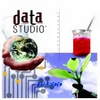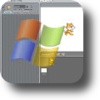For scientists and science students, this program can create 3D models of molecular structures
For scientists and science students, this program can create 3D models of molecular structures
Avogadro is a specialized tool designed for the advanced user in the field of chemistry and related disciplines. It’s a powerful software application geared towards molecular editing and visualization, often wielded by professionals and students to create comprehensive three-dimensional representations of molecules.
Streamlined Molecular Visualization
The primary functionality of Avogadro lies within molecular modeling. The software does an excellent job in providing users the ability to rotate, zoom, and manipulate molecular structures in 3D space. This dynamic visual interface helps in understanding complex molecular formations, making it easier to study molecular geometry and the arrangement of atoms within a molecule from any angle.
User-Friendly Interface for Non-Experts
While Avogadro is certainly a boon for scientists and those immersed in the field, its interface is designed to be navigable and accessible by non-experts as well. This makes it an excellent educational tool, providing visual aids that help in grasping the complexities of molecular structures. The ease of creating various colored structures is notable, and it provides an almost intuitive experience when using the mouse to drag molecules along their axes.
Customization through Plugins and Scripting
A standout feature of Avogadro is its capability for expansion. Users with programming skills can extend the functionality of the software through plugins. This extensibility is important for tailoring the tool to specific research needs and developing additional features to supplement its core capabilities. Moreover, future updates are expected to incorporate scripting options for further customization, enhancing its adaptability for a wide array of scientific applications.
Cross-Platform Compatibility
Flexibility is one of the hallmarks of Avogadro, and this extends to its cross-platform compatibility. Whether the user is on Windows, Mac, or Linux, Avogadro maintains a consistent performance, making it a versatile choice for individuals working in different computing environments. This broad compatibility underscores its utility in collaborative projects that might involve diverse technological ecosystems.
Open Source Advantages and Drawbacks
As with many open-source collaborations, Avogadro has the advantage of community-driven development, which potentially accelerates the addition of new features and the resolution of issues. On the flip side, the open-source nature also means that the software may experience more bugs and errors than commercial counterparts. Users may encounter occasional instability, such as unexpected crashes, though this is a common risk with open-source software in active development.
First Stable Release
It’s worth noting that the current version of Avogadro marks its first stable release. This milestone heralds a new chapter in the software’s lifecycle, suggesting a level of maturity and reliability that users can count on for their specialized tasks.
Pros
- Intuitive 3D visualization of molecular structures
- User-friendly interface suitable for educational purposes
- Customizable through plugins and potential for future scripting
- Compatibility with multiple operating systems
- Active open-source community and ongoing development
Cons
- May be prone to bugs and crashes
- Higher learning curve for advanced features and customization
- Might require programming knowledge for full customization
In conclusion, Avogadro stands out as a compelling tool for molecular modeling, providing an accessible and customizable platform for scientists, students, and educators in the field. Its vibrant and supportive open-source community continues to refine its capabilities, and despite some stability issues, its contribution to computational chemistry and material science remains significant.




